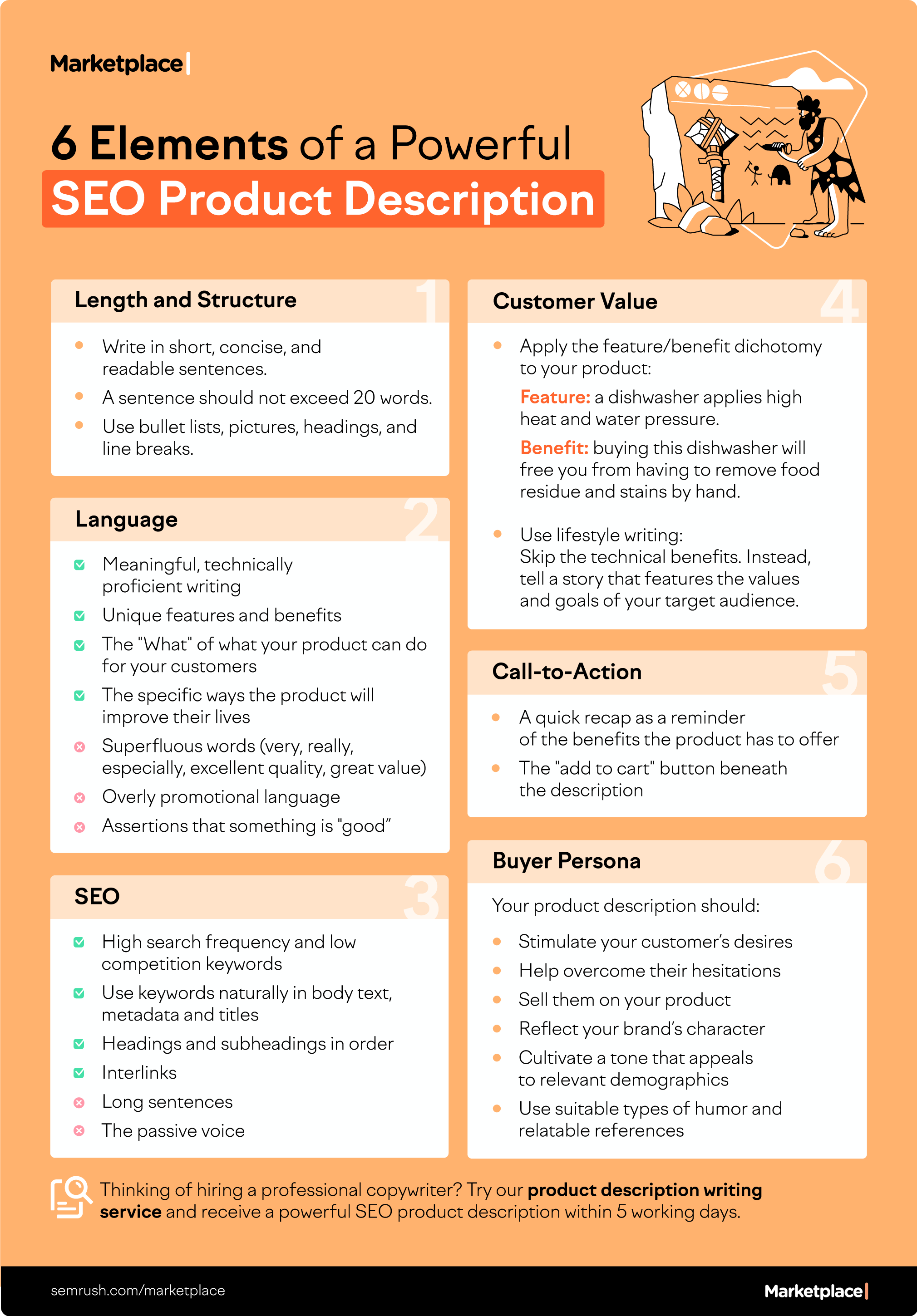How to Write SEO-Friendly Product Descriptions

In the bustling world of e-commerce, your product descriptions are the digital equivalent of a salesperson's pitch. They can make or break a sale. But in today's search-engine-driven market, it's not just about persuading customers; it's also about pleasing the algorithms. So, how do you write product descriptions that are both compelling and SEO-friendly? Let's dive in and find out.
Understanding the Power of SEO for E-commerce
Search Engine Optimization (SEO) is the backbone of digital marketing. It's the art of making your website visible to search engines, thereby driving organic traffic to your product detail pages. But SEO isn't just about keywords; it's about creating valuable, engaging content that resonates with your audience.
The Art of Writing SEO-Friendly Product Descriptions
1. Know Your Audience
Before you start writing, understand who you're writing for. Who are your customers? What are their pain points? What language do they use? Knowing your audience will help you create product descriptions that speak directly to them.
2. Optimize Product Descriptions with Keywords
Keywords are the cornerstone of SEO. They are the words and phrases that your customers use to search for products like yours. Incorporate these keywords naturally into your product descriptions. But remember, keyword stuffing is a thing of the past. Search engines now penalize content that's overly optimized.
For example, if you're selling organic coffee, your keywords might be "organic coffee," "fair trade coffee," "best coffee beans," etc. Use these keywords in your product title, meta description, and throughout your product description.
3. Write Compelling Descriptions
Your product descriptions should be more than just a list of features. They should tell a story, evoke emotions, and paint a picture. Use vivid, descriptive language. Highlight the benefits of your product, not just its features.
Imagine you're selling a high-end blender. Instead of saying "It has a powerful motor," say "Blend smoothies in seconds with our powerful, commercial-grade motor." See the difference?
4. Use Headings and Subheadings
Headings and subheadings (H1, H2, H3 tags) not only make your content more readable, but they also help search engines understand the structure of your content. Use your primary keyword in your H1 tag and related keywords in your H2 and H3 tags.
5. Keep It Simple and Scannable
Most people don't read online; they scan. So, make your product descriptions scannable. Use bullet points, short paragraphs, and plenty of white space. Avoid jargon and complex sentences. The easier your content is to read, the more likely people are to engage with it.
6. Incorporate Rich Media

Images, videos, and infographics can enhance your product descriptions and improve SEO. Search engines love rich media, and so do customers. Use high-quality images and videos to showcase your product's features and benefits.
7. Use Internal and External Links
Internal links help search engines understand the context of your content and improve navigation for users. External links to authoritative sources can boost your credibility and provide additional value to your readers.
For example, if you're selling fitness equipment, you might link to a blog post about the benefits of strength training or a study from a reputable source like Harvard Health.
8. Optimize for Mobile
More people are shopping on their mobile devices than ever before. Make sure your product descriptions are mobile-friendly. Use responsive design, and keep your descriptions concise and easy to read on a small screen.
9. Encourage User-Generated Content
Customer reviews and ratings can enhance your product descriptions and improve SEO. Encourage your customers to leave reviews. Respond to negative reviews professionally and promptly.
10. Regularly Update Your Content
SEO is an ongoing process. Search engines favor fresh, up-to-date content. Regularly update your product descriptions to reflect changes in your products, trends, and customer needs.
SEO Best Practices for E-commerce Product Copy
1. Use Long-Tail Keywords
Long-tail keywords are longer, more specific keyword phrases that are easier to rank for and often have higher conversion rates. For example, instead of "running shoes," use "best running shoes for women with high arches."
2. Optimize Your Meta Tags
Meta tags, including the title tag and meta description, are crucial for SEO. They tell search engines what your page is about and appear in search results. Make sure your meta tags are descriptive, compelling, and include your primary keyword.
3. Use Schema Markup
Schema markup is a type of structured data that helps search engines understand your content better. It can improve your visibility in search results and enhance your listings with rich snippets.
4. Monitor Your Performance
Use tools like Google Analytics and Google Search Console to monitor your SEO performance. Track your rankings, traffic, and conversions. Use this data to inform your SEO strategy and make improvements.
Conclusion: Crafting Product Descriptions that Sell
Writing SEO-friendly product descriptions is both an art and a science. It requires a deep understanding of your audience, a knack for persuasive writing, and a solid grasp of SEO best practices. But with the right approach, you can create product descriptions that not only rank well in search engines but also convert browsers into buyers.
So, are you ready to transform your product descriptions into powerful sales tools? Remember, every word counts. Every sentence is an opportunity to connect with your customers and convince them that your product is the one they've been searching for.
FAQs
1. How long should my product descriptions be?
There's no one-size-fits-all answer to this question. The length of your product descriptions should be determined by the complexity of your product and the information needs of your customers. However, as a general rule, aim for at least 300 words to provide enough context for search engines.
2. Should I use the manufacturer's product description?
Using the manufacturer's product description can lead to duplicate content issues, which can harm your SEO. Instead, use the manufacturer's description as a starting point and create your own unique, SEO-friendly description.
3. How often should I update my product descriptions?
You should update your product descriptions whenever there are changes to your products, trends, or customer needs. Regularly updating your content can also improve your SEO. Aim to review and update your product descriptions at least once a year.
4. How do I find the right keywords for my product descriptions?
Use keyword research tools like Google Keyword Planner, SEMrush, or Ahrefs to find relevant keywords for your product descriptions. Consider search volume, competition, and relevance when selecting your keywords.
5. How can I make my product descriptions more engaging?
To make your product descriptions more engaging, use vivid, descriptive language, tell a story, and highlight the benefits of your product. Use the active voice, personal pronouns, and rhetorical questions to connect with your readers. Incorporate analogies and metaphors to make your descriptions more memorable.

By following these tips and best practices, you can create SEO-friendly product descriptions that not only drive traffic to your e-commerce site but also convert that traffic into sales. Happy writing!
Belum ada Komentar untuk "How to Write SEO-Friendly Product Descriptions"
Posting Komentar